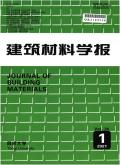巴尼·哈马德Qal'a建筑陶瓷的研究
Q3 Engineering
Jianzhu Cailiao Xuebao/Journal of Building Materials
Pub Date : 2018-07-01
DOI:10.5281/ZENODO.1299318
引用次数: 0
摘要
为了精确地定义从巴尼·哈马德遗址(1980年被列入联合国教科文组织世界遗产名录)出土的建筑陶瓷的物理化学特征,我们对一组陶瓷进行了研究。第一次分析集中在釉的颜色上,通过光学吸收分光光度法(也称为光学吸收光谱法),通过x射线衍射分析纹理,并通过扫描电子显微镜和x射线荧光分析这些釉及其兵马俑的各个组成阶段的元素组成。事实上,结合光学吸收光谱和x射线荧光的研究使我们能够确定一些样品中釉的单色绿色的来源。这种着色可归因于Cu2+化学元素的存在;但这些釉料因含铁量高而变暗。这可以解释为故意在含锡不透明的铅釉中加入铁,在氧化气氛中烘烤,然后涂上富含石灰石的毒膏。所有碎片的化学和矿物学分析表明,它们的膏体是钙质的。这个数据集将被用于再创造实验。它也代表了第一个可利用的参考系统,用于与阿尔及利亚其他地点和不同时期的其他样本进行潜在的比较。本文章由计算机程序翻译,如有差异,请以英文原文为准。
Study of Architectural Ceramics of the Qal'a of Bani Hammad
In order to define with precision, the physicochemical characteristics of the architectural ceramic exhumed from the Qal'a of Bani Hammad’s site (inscribed on the UNESCO’s World Heritage List in 1980), our study was conducted on a set of ceramics. The first analyses were focused on the color of the glazes, by optical absorption spectrophotometry (also called optical absorbance spectroscopy), on the texture by X-Ray diffraction, and on the elemental composition of the various constituent stages of these glazes and their terra cotta, by scanning electron microscopy and X-Ray fluorescence. Indeed, the study combining optical absorbance spectroscopy and X-Ray fluorescence enabled us to determine the origin of the monochromic green coloring of the glazes in some samples. This coloring can be attributed to the presence of the Cu2+ chemical element; but these glazes darkened due to the high iron content they contain. This could be explained by an intentional addition of iron, in tin-opacified leaded glazes, baked in an oxidizing atmosphere and put on a limestone-rich marlacious paste.
The chemical and mineralogical analyses of all shards show that their paste is calcareous. This dataset will be exploitable for re-creation experiments. It also represents a first exploitable referential system, for potential comparisons with other samples belonging to other Algerian sites and different periods of time.
求助全文
通过发布文献求助,成功后即可免费获取论文全文。
去求助
来源期刊

Jianzhu Cailiao Xuebao/Journal of Building Materials
Engineering-Building and Construction
CiteScore
2.70
自引率
0.00%
发文量
3652
 求助内容:
求助内容: 应助结果提醒方式:
应助结果提醒方式:


